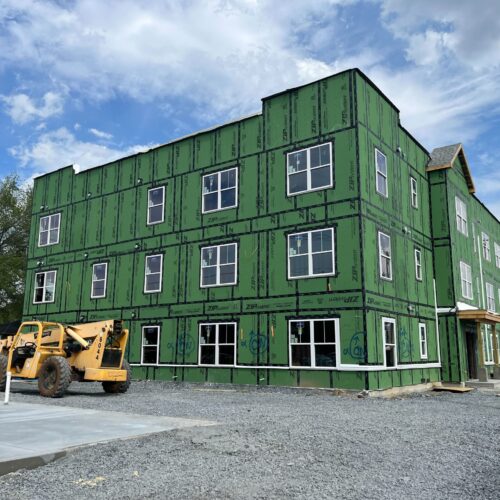‘You Can’t Do it Alone:’ How an Assault Survivor Navigated from Trauma to Advocacy
One evening in 2012, Charlene Bencomo received a frantic call from her mother.
“There’s a detective here,” Bencomo’s mother told her.
Turning the words over in her head, she raced across town to her childhood home.
When Bencomo lived there 13 years earlier, she knew the inside of her mother’s house all too well. She’d spent months barely leaving her room, terrified that the man who had violently sexually assaulted her would find her if she stepped outside. Now, she was preparing to meet with a detective who might know the name of her attacker, information she’d given up on learning many years earlier.
“When people say ‘I fell out of my chair,’ I now know where that term comes from—hearing that news was literally like someone shoving me,” Bencomo said. “After all those years, I’d finally learned how to live without medication and therapy and I’d come to terms with my PTSD, and then this was just dropped on my front steps again. It brought me back to a place I’d worked so hard to get out of.”
Bencomo’s sexual assault kit was one of more than 5,000 kits sitting untested for DNA in police department evidence rooms across New Mexico, some of which dated as far back as the 1980s.
The New Mexico district attorney vowed to rectify the state’s ever-growing backlog of untested rape kits in the early 2000s. Those promises felt hollow to Bencomo, who said she only learned that the state was beginning to test the DNA in old sexual assault cases like hers through newspaper articles about the district attorney’s campaign to ease the backlog. Bencomo was not officially notified about the status of her case until many years later, when a detective showed up on her mother’s doorstep saying that they’d matched the DNA in her case to another sexual assault in Colorado.
Every aspect of her case’s reopening—from reading through police reports to having attorneys prep her for the trial—was jarring for Bencomo, but it was the crime scene photos that dredged up the memories she’d buried the deepest, she said.
One afternoon in 1999, a 20-year-old Bencomo was alone in the small, family-owned clothing store where she worked in Las Cruces when a man she didn’t recognize came into the shop and attacked her, shattering her mouth and jaw before locking her in the employee restroom and sexually assaulting her.
Bencomo put up a fight. At the time of her attack, she was studying to become a forensic psychologist, and amid the chaos of the situation she remembers having one prescient thought.
“I told myself, ‘Leave a crime scene. Give them DNA to find because you’re probably not going to get out of here alive,’” she said.
In the days after her attack, the police referred Bencomo to New Mexico’s Victim Services Division, where she was connected to the counselor that “saved [her] life.”
“I was absolutely suicidal,” she said. “Whether I was asleep or awake, I was reliving those 15 minutes in that bathroom with him every second of every day and I just wanted all of that to go away … It was therapy that showed me I needed intervention … in my body and in my mind. You can’t do it alone.”
By the time Bencomo sat in the courtroom for her case’s sentencing hearing in 2012, her life bore little resemblance to the one she’d led in the months following her assault in 1999. Multiple surgeries over the course of more than a decade had repaired her jaw and mouth enough to bite into solid foods again. She’d stopped carrying around her anti-anxiety medication, had finished her college degree and become a special education teacher, and was actively volunteering in her community.
Hearing her attacker’s sentence, she said, was not the most valuable part of her experience in the courtroom. The trial had tested the strength of her recovery, and she came out of the experience with a renewed confidence in herself and the support systems she’d built. Even when she was offered additional counseling from the Victim Services Division after her case reopened, Bencomo felt strong enough to push forward without it.
“I will carry physical and mental reminders of what happened to me for the rest of my life, so in some ways, the sentence didn’t matter—it wasn’t going to change my reality,” Bencomo said. “It was speaking to the judge and sharing my story that was most important to me.”
After the trial, Bencomo began telling her story publicly, first to groups of other victims and then to nurses, doctors, members of law enforcement, and other first responders. Today, she continues to speak about her experience, the role that swift and transparent processing of evidence can play in a crime victim’s recovery, the devastating impact that delayed notification can have on victims of crime, and the importance of immediate and effective victim services. She also hopes that her story helps others cope with the stigma and trauma associated with sexual assault.
“I had been waiting for someone else to talk about it, but then I realized, sometimes you just have to be that person,” she said. “When you know better, you can do better. To do better, people have to hear these stories and we can’t let stigma keep us from telling them.”
 Zero Returns to Homelessness Initiative Launches Nationally, with Pennsylvania Leading the Way
Read More
Zero Returns to Homelessness Initiative Launches Nationally, with Pennsylvania Leading the Way
Read More
 New Hampshire Continues Justice Reinvestment Effort to Improve Conditions for People Who Are High Utilizers of Criminal Justice and Behavioral Health Systems
Read More
New Hampshire Continues Justice Reinvestment Effort to Improve Conditions for People Who Are High Utilizers of Criminal Justice and Behavioral Health Systems
Read More














